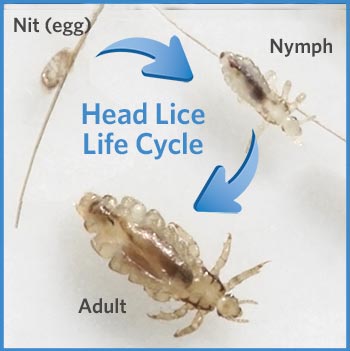What Are Head Lice
Pediculosis (head lice infestation) has been common among humans for hundreds of years. The first documented case of head lice dates back to prehistory. Over the last 40 years, the number of head lice cases has risen dramatically, making the diagnosis and treatment of pediculosis one of the most common responsibilities in general medical practice.
Head lice (P humanus) are found in almost all countries and climates around the world. They are wingless insects also known as “sucking lice”, as opposed to “chewing lice” that are not found on humans.

How Big are Head Lice?
Lice are small and wingless bugs, varying in size from 1/16″ to 1/8″ (about the size of a sesame seed). They have three pairs of legs, each ending with a claw-like talus that is specially adapted for grasping the texture and shape of a hair strand.
The average length of an adult louse is 1-2 mm while the female louse is slightly larger in size than the male. They range from white to gray in color. See our pictures of head lice for easier identification. Head lice can turn a slightly brownish rust color immediately after feeding.
What Do Lice Eat?
Lice feed on blood of human hosts for nourishment. They have small frontal mouthparts with 6 tiny hooks that help foster their attachment to human skin during feeding. When the lice are not feeding, the sucking mouthparts retract back into the head. Head lice feed approximately 5 times in a 24-hour period for 35-45 minutes at each feeding. A louse cannot survive for more than 36 hours without feeding off the human head. If dislodged from the hair shaft and host, eggs die within two weeks.

The life cycle of head lice lasts about 30-35 days from egg (or nit) to adult. The female louse can lay as many as 10 eggs per day, usually at night. She lays them close to the scalp at the base of the hairline and seems to prefer areas close to the nape of the neck and behind the ears for warmth during incubation.
When laying lice eggs, the female louse secretes an insoluble, cement-like substance to attach the nit to the hair. The incubation of the egg usually lasts between 7 to 10 days. After the egg hatches, the second stage of the life cycle, or the nymph stage, also takes about 7-10 days. The nymph typically molts 3 times before reaching its adult form.
Head Lice Myths Corrected
There are a few assumptions made about head lice because people think lice are like other small, crawling insects. Here are a few facts to correct those misconceptions:
- Head lice do not fly or jump. They are passed through direct contact from one host to another.
- You cannot give head lice to your pets or get it from your pets.
- Head lice prefer clean hair; they are not a sign that someone has poor hygiene.
- Just because one person is infested in your household, it does not mean that all family members are infested. Be sure to perform a head check on every family member to treat those only affected.
